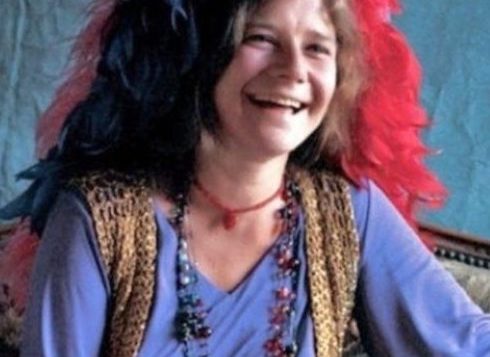 JANIS: Her Life and Music
JANIS: Her Life and Music
by Holly George-Warren
Simon & Schuster. 400 pages, $28.99
“COME ON, come on and take it, take another little piece of my heart now, baby,” sung by Janis Jop-lin, belongs in any compilation of the popular music of the 1960s. Those of us who remember the original recording tend to hear it as a direct expression of the singer’s emotional experience, although the words of “Piece of My Heart” were by songwriters Jerry Ragovoy and Bert Berns. The song was performed by Erma Franklin, sister of Aretha, before Janis and her band recorded it on the album Cheap Thrills in 1968.
Holly George-Warren’s new biography, Janis: Her Life and Music, is large and immersive despite Janis’ short life. As most of her fans know, Janis Joplin was a charter member of the “27 club,” a list of rock musicians who died at that age. Janis’ off-and-on love affair with various kinds of dope clearly contributed both to her roller-coaster life and to her death, which—despite rumors of suicide and even murder—is described in excruciating detail as an accidental overdose on heroin.
The narrative begins with Janis’ ancestors and describes her parents’ marriage and the birth of Janis, their first child, in 1943. Port Arthur, Texas, the oil town where she grew up
Texas was a racially segregated state when Janis was growing up, but she sought out rhythm and blues, a genre that was rarely performed for white audiences. After watching Elvis Presley sing “Hound Dog” on the new family TV set, Janis managed to find a record of the original blues version by “Big Mama” Thornton, which she said she preferred. George-Warren describes thirteen-year-old Janis’ acquisition of this record as a mystery.
Later, Janis Joplin is described as one of several “crossover” musicians who not only brought a rhythm and blues sensibility into an emerging rock scene but also defied the racial segregation of the time. A photo of her at a Christmas party put on by a recording company in 1968 shows her smiling happily, surrounded by African-American musicians.

This full story of Joplin’s life shows both lucky breaks and missed opportunities. While her powerful voice attracted record producers, she could be notoriously unreliable, largely because of her dependence on addictive substances. Even though she could be clean and sober for months at a time, she always relapsed. George-Warren does not speculate on whether she was biologically susceptible to addiction, simply adventurous and willing to try anything that came her way, or chronically in need of chemical self-medication.
A clue to Joplin’s life of rebellion and excess can be found in the culture she was rebelling against. As this book makes clear, Joplin attended high school at a time when unmarried girls were expected to be virgins and middle-class parents worried that their teenagers might stop attending church and become “beatniks,” a role that she adopted as a teenager. According to George-Warren’s sources, Joplin was ostracized in high school, and even when she began performing in clubs, she was sometimes told that her appearance was too scruffy and her singing style too raw for local audiences. Later success apparently didn’t erase the pain of early rejection.
Just as she defied musical categories, Joplin’s sex life defied the neat categories of her time, and this biography wisely avoids most labels. She had several sexual relationships with women, and a titillating book about her affair with one of them, Going Down with Janis (by Peggy Caserta “as told to” writer Dan Knapp), published ten years after Janis’ death, did much to further an image of her as an “out” lesbian. (This reviewer was given a copy by a girlfriend in the 1980s.) However, a traditional dream of heterosexual, monogamous marriage as the embodiment of romantic love seems to have appealed to Janis Joplin, as it did to others in the counterculture of the 1960s. Abortion and homosexuality were still criminalized, and married-with-children was still widely accepted as the standard relationship status of “normal” adults.
Joplin apparently accepted several proposals of marriage from male lovers who then disappointed her in various ways. It seems unlikely that Janis Joplin could have “settled down” into a conventional marriage like that of her parents, but it clearly broke her heart to be left or betrayed by potential husbands. No one knows what sexual and romantic choices Janis Joplin would have made if she had survived into her thirties or beyond.
Several of those who were close to Janis wrote about her in the years following her death. Going Down with Janis, appeared in 1980. Love, Janis, by her sister Laura, is a more serious life story, first published in 1992 and reprinted in 2005. Material from these books and numerous other sources is incorporated in the new biography, which is undoubtedly the most thorough assessment of Janis Joplin’s life and times yet written. A voluminous bibliography and an index make it easy for a reader to find particular references. For old fans, this book pays tribute to the wild woman we thought we knew, and for those who weren’t alive when Joplin was, this book is an excellent introduction.
Jean Roberta is a widely published writer based in Regina, Canada.






